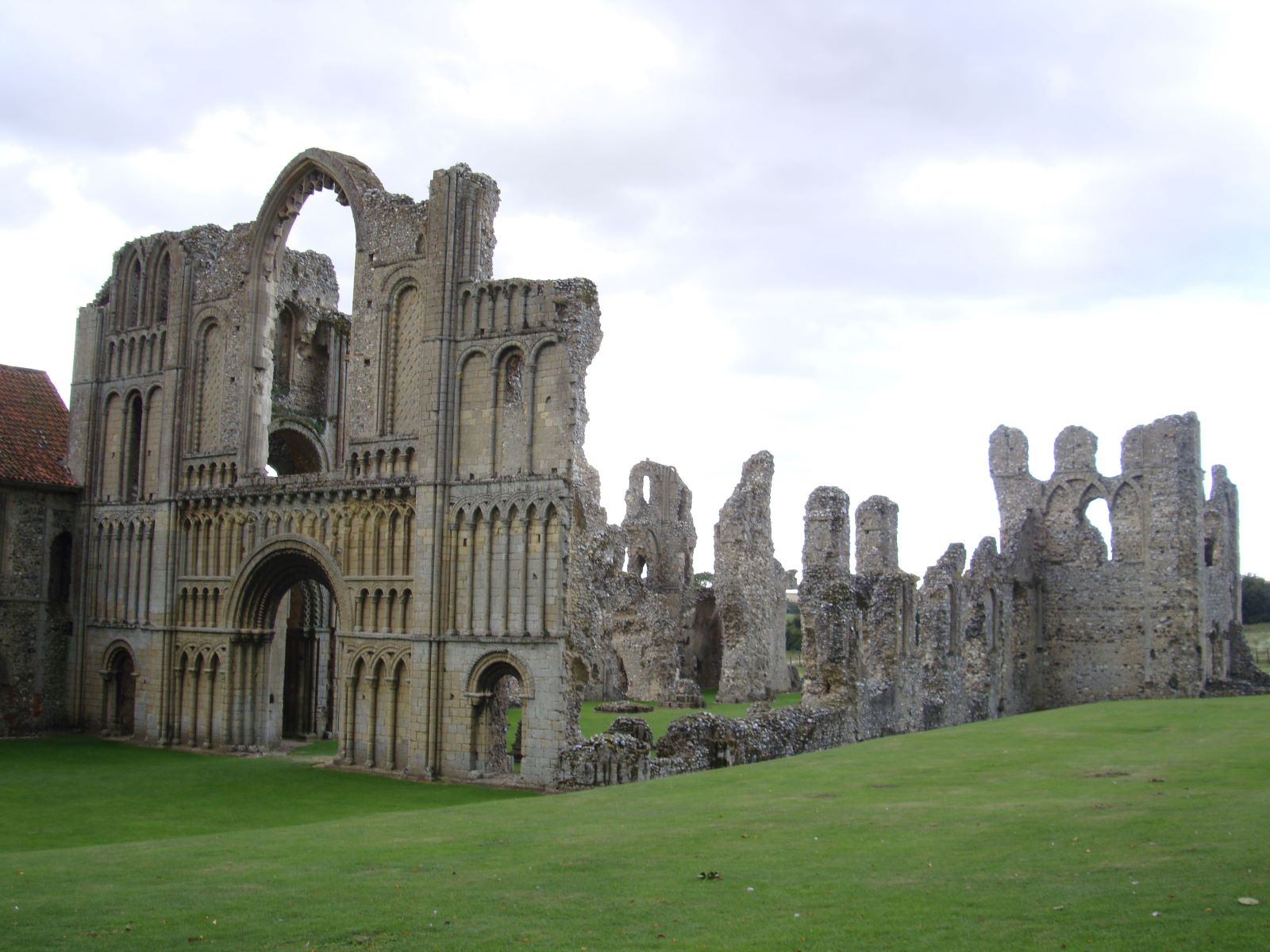
Castle Acre Priory is a hidden gem nestled in the heart of Norfolk, England. This medieval marvel, founded in 1090 by the powerful de Warenne family, offers a glimpse into monastic life during the Middle Ages. Why should you care about Castle Acre Priory? Because it’s one of the best-preserved monastic sites in the country, showcasing stunning architecture and rich history. Imagine walking through ancient ruins where monks once prayed, worked, and lived. From its impressive gatehouse to the tranquil herb garden, every corner tells a story. Ready to step back in time? Let’s uncover 34 fascinating facts about Castle Acre Priory!
A Glimpse into Castle Acre Priory
Castle Acre Priory, located in Norfolk, England, is a historical gem with a rich past. Founded in the 11th century, this site offers a fascinating look into medieval monastic life. Let’s dive into some intriguing facts about this ancient priory.
The Origins of Castle Acre Priory
Understanding the beginnings of Castle Acre Priory helps appreciate its historical significance.
- Castle Acre Priory was founded in 1090 by William de Warenne, the 1st Earl of Surrey. He was a Norman nobleman who played a significant role in the Norman Conquest of England.
- The priory was dedicated to St. Mary, St. Peter, and St. Paul. This dedication reflects the common medieval practice of honoring multiple saints.
- It was established as a Cluniac priory. Cluniac monasteries followed the reforms of the Abbey of Cluny in France, emphasizing strict adherence to the Benedictine Rule.
Architectural Marvels
The architecture of Castle Acre Priory showcases the grandeur and style of medieval monastic buildings.
- The priory church was built in the Romanesque style. This style is characterized by semi-circular arches, sturdy pillars, and large towers.
- The west front of the church is particularly impressive. It features intricate carvings and a grand entrance that would have welcomed pilgrims and visitors.
- The cloister was the heart of the priory. Monks would gather here for prayer, study, and communal activities.
- The chapter house was where monks held daily meetings. Important decisions about the priory’s operations were made in this room.
- The refectory was the dining hall for the monks. Meals were eaten in silence while a monk read from religious texts.
Daily Life of the Monks
Life at Castle Acre Priory was governed by a strict routine centered around religious devotion.
- Monks followed a daily schedule of prayer, work, and study. This schedule, known as the Divine Office, included eight prayer services throughout the day and night.
- They wore simple habits made of wool. These garments symbolized their vows of poverty and humility.
- Monks engaged in various manual labor tasks. These included gardening, brewing, and maintaining the priory’s buildings.
- The priory had a scriptorium where monks copied manuscripts. This was an important task for preserving religious and classical texts.
- Monks observed periods of silence. This practice helped them focus on their spiritual duties and avoid unnecessary distractions.
Historical Events and Changes
Castle Acre Priory witnessed several significant events and changes over the centuries.
- The priory was dissolved in 1537 during the Dissolution of the Monasteries. This was part of King Henry VIII’s efforts to break away from the Catholic Church and seize monastic wealth.
- After the dissolution, the priory’s buildings fell into ruin. Many of the stones were repurposed for other construction projects in the area.
- The site was excavated in the 20th century. Archaeologists uncovered many artifacts and gained insights into the priory’s layout and history.
- Castle Acre Priory is now managed by English Heritage. This organization works to preserve and promote England’s historic sites.
Notable Features and Artifacts
Several unique features and artifacts make Castle Acre Priory a fascinating place to explore.
- The priory’s gatehouse is remarkably well-preserved. It served as the main entrance and would have been a symbol of the priory’s wealth and power.
- Remnants of the priory’s infirmary can still be seen. This building provided care for sick and elderly monks.
- The site includes a rare example of a medieval fishpond. Monks used this pond to raise fish for their meals, adhering to dietary restrictions.
- Several tombstones and effigies have been found at the site. These provide clues about the people who lived and worked at the priory.
- Fragments of medieval stained glass have been discovered. These colorful pieces once adorned the priory’s windows.
The Priory’s Influence and Legacy
Castle Acre Priory’s influence extended beyond its walls, impacting the surrounding community and future generations.
- The priory played a key role in the local economy. It owned extensive lands and employed many laborers and craftsmen.
- It served as a center of learning and culture. Monks educated local children and provided spiritual guidance to the community.
- The priory’s ruins inspired artists and writers. Its picturesque setting and historical significance have been depicted in various works of art and literature.
- Castle Acre Priory is a popular tourist destination today. Visitors can explore the ruins and learn about medieval monastic life through guided tours and exhibits.
- The priory’s legacy lives on in the village of Castle Acre. Many of the village’s buildings and street names reflect its monastic past.
Fun and Lesser-Known Facts
Here are some fun and lesser-known tidbits about Castle Acre Priory that might surprise you.
- The priory once had a brewery. Monks brewed ale, which was a safer alternative to drinking water at the time.
- It is said that the priory is haunted. Some visitors have reported seeing ghostly figures and hearing mysterious sounds.
- The priory’s gardens included medicinal herbs. Monks used these herbs to treat various ailments.
- Castle Acre Priory was featured in a BBC television series. The show explored the history and architecture of England’s monastic sites.
- The priory’s ruins have been used as a filming location. Several movies and TV shows have been shot here, taking advantage of its atmospheric setting.
- A medieval fair is held annually in Castle Acre. This event celebrates the village’s history and includes reenactments, crafts, and entertainment.
- The priory’s site is a haven for wildlife. Birds, bats, and other creatures make their home among the ruins.
Final Glimpse of Castle Acre Priory
Castle Acre Priory stands as a testament to medieval architecture and monastic life. Founded in 1090, this historic site offers a peek into the past with its well-preserved ruins and rich history. From the intricate carvings to the sprawling grounds, every corner tells a story of devotion and craftsmanship.
Visitors can explore the remains of the church, cloisters, and living quarters, imagining the daily lives of the monks who once called this place home. The priory's significance extends beyond its walls, influencing the surrounding village and shaping local history.
Whether you're a history buff or just curious, Castle Acre Priory provides a fascinating journey through time. Its enduring legacy reminds us of the importance of preserving our heritage for future generations. So next time you're in Norfolk, don't miss the chance to step back in time and experience the magic of Castle Acre Priory.
Was this page helpful?
Our commitment to delivering trustworthy and engaging content is at the heart of what we do. Each fact on our site is contributed by real users like you, bringing a wealth of diverse insights and information. To ensure the highest standards of accuracy and reliability, our dedicated editors meticulously review each submission. This process guarantees that the facts we share are not only fascinating but also credible. Trust in our commitment to quality and authenticity as you explore and learn with us.


